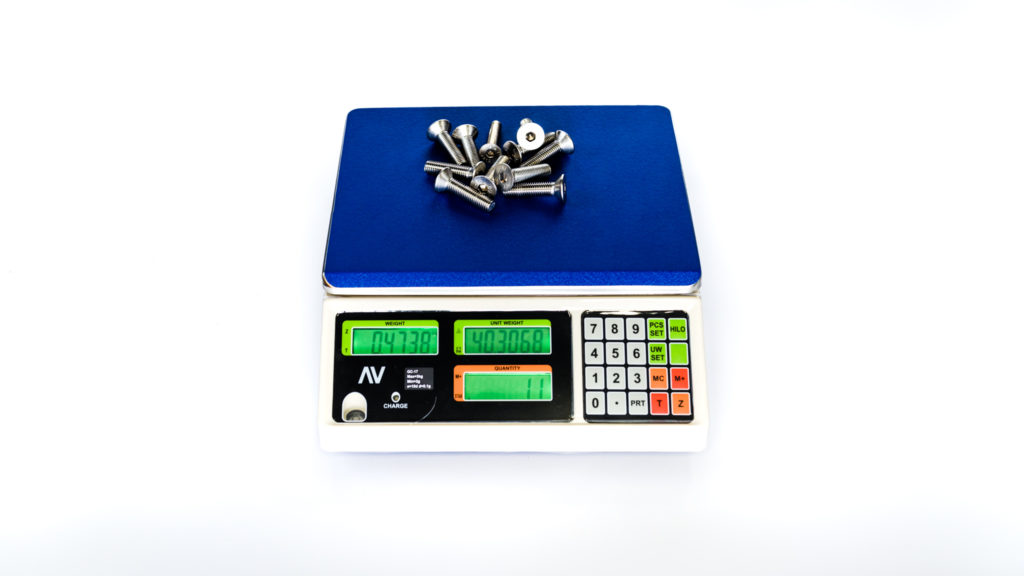Counting scales are standard in industry today, and it’s so crucial that accuracy is considered. Why? To ensure you don’t lose out on profit, by giving away product.
Over-counting and under-counting
Counting scales are used to check in products. It is critical to ensure that the correct number of ‘widgets’ are sitting on the shelf, ready for a production run. If the scale is not accurate enough, you may find that you’ve run out of stock during a critical phase. If this happens, you’re in a situation where you need to obtain more products quickly. This could also come with a higher price tag. It could also delay your customer’s delivery and ultimately lose you profit.
On the opposite side of this issue, undercounting can result in not sending enough of the product to your customers. This results in many logistical problems, including credit notes, short production runs, additional delivery costs and potentially losing customers.

Guidelines for counting scale accuracy
Here are some simple guidelines to try and avoid these issues and ensure you have confidence in your counting scale accuracy.
We’re using a relatively standard 30kg capacity counting scale as an example:
- To program or set up your counting scale for a particular product, a number of items are counted and placed on the weighing platform; the electronics of the scale then divide the weight by the number of components.
- Normally, this would have a 1g division of weight displayed.
- Your scale calculates and displays the average weight of one component, and the count increases when more components are placed on the weighing platform.
The question is can the scale weigh all the sample item types accurately?
- An extreme example of this and from our own experience is a range of items ranging from 2mm diameter rubber ‘O’ rings to 10mm mild steel bolts used on a standard 30kg counting machine.
- Can they all be weighed accurately on the same machine to set the scale up to count?
- No, they cannot because the rubber ‘O’ rings cannot be individually weighed using a 1g division of weight.
- There are probably between 30 and 50 ‘0’ rings to 1g, and even if 100 items were used as a sample, the final count could still be 50% out.
Conclusion
In conclusion, it is vital that individual items can be accurately weighed when choosing your counting scales. ADF can supply a complete range of counting scales and systems. We have on many occasions supplied a machine to count both ‘0’ rings and 10mm mild steel bolts.
For more top weighing scale tips, please read our 10 Top Tips when you’re using a weighing scale blog.
We have over 40 years of experience advising our customers of the correct scale for your weighing needs. Please contact our technical sales department for further advice if you need help choosing the right counting scales.

